




A few weeks back, I was up late watching Army Lt. Col. Anne McClain, a NASA astronaut, make a safe landing in Kazakhstan. I’ve been part of many homecomings during my husband’s military career, where emotions run high as you watch someone’s feet touch down safely. But this one felt different because her story required a lifetime to come full circle.
McClain, a West Point grad, had just completed a space mission lasting 204 days including two spacewalks and countless scientific experiments. The other remarkable part of the story, though, is this soldier completed a goal she worked toward for the entirety of her life.

In this issue you will meet another service member, Navy Reserve Lt. Cmdr. (sel) Jesse Iwuji who is living his own life’s dream. The sailor is the first Naval Officer to drive for NASCAR, a goal he spelled out on a whiteboard for himself and is now watching come to fruition. You will also read about a guardsman who is participating in construction projects for the people of Guyana. He shares how his decision to serve has allowed him to do something impactful that will benefit generations to come.
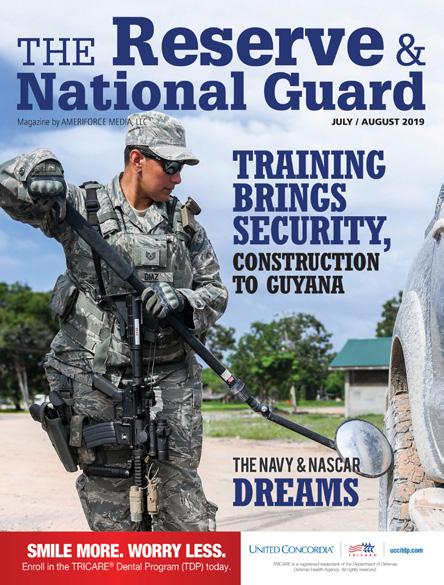
So, what’s your why? Why did you choose to raise your hand and take an oath? Why have you taken on this specific MOS? Perhaps you are tackling an education in addition to a career, or raising a family around your military commitment. Whatever ‘it’ you are driving yourself toward, look to the countless examples of peers who validate that you can be whatever you choose to be, on your own terms and timeline. And in the moments you feel defeated in your pursuits, remind yourself of that why.
Yours in writing,
 Bianca M. Strzalkowski Managing Editor
Bianca M. Strzalkowski Managing Editor
The Reserve & National Guard is published six times a year for reservists and members of the National Guard. Copies are available through participating Reserve and National Guard training centers at no cost.

Unit distribution requests can be made online at: AmeriForceMedia.com/rng/print-magazines/ Individuals can order a free digital edition of this guide at: AmeriForceMedia.com/rng/subscribe-free/ Editorial comments can be emailed to: Editor@AmeriForceMedia.com
The Reserve & National Guard by AmeriForce Media is published by AmeriForce Media, LLC, Bloomington, Ind., a private company. Information and advertisements in this publication do not constitute endorsement by any branch of the military or the Department of Defense. No part of this publication may be copied without the express written permission of the publisher. AmeriForce Media, LLC, the publisher, and publisher’s agents make no endorsement of any advertised services or products and none should be inferred.
President and Publisher Todd Taranto
Managing Editor Bianca M. Strzalkowski
Associate Editor Maddie Dolan
Design Open-Look Business Solutions
PLEASE CALL 703-337-8100
Todd Taranto Publisher
Todd.Taranto@AmeriForceMedia.com

Julie Miller
Vice President, Sales

Julie.Miller@AmeriForceMedia.com
Brian Dunbar
Director of Business Development
Brian.Dunbar@AmeriForceMedia.com
Ursula Hirschhaeuser
Germany Sales +49 (0) 69-15053980
Ursula.Hirschhaeuser@AmeriForceMedia.com


The Department of Defense named 15 recipients of the 2019 Secretary of Defense Employer Support Freedom Award, the highest U.S. government honor to employers for support of National Guard and Reserve employees. The employers were chosen from 2415 nominations received by Guardsmen and Reservists.
Employer name
Archer Daniels Midland
Location
Chicago, Illinois
Barclays New York, New York
Callison Tighe & Robinson, LLC
Columbia, South Carolina
Chevron San Ramon, California
Cracker Barrel Old Country Store
Delta Solutions & Strategies, LLC
Direct Supply, Inc.
Eversource Energy
Houston Police Department
Lebanon, Tennessee
Colorado Springs, Colorado
Milwaukee, Wisconsin
Hartford, Connecticut and
Boston, Massachusetts
Houston, Texas
Kauai Auto Repair Kalaheo, Hawaii
Levi Rodgers Real Estate Group
@ RE/MAX Military City
LG&E and KU Energy, LLC
Nationwide Mutual Insurance Company
The Steel Network
West Valley City
“It is an honor to recognize these 15 exemplary civilian employers,” Patrick Shanahan, former acting defense secretary, stated in a press release. “The strength of our military and the success of our defense strategy depends on the readiness of our National Guard and Reserve members. These dedicated citizen warriors could not accomplish their missions without employers who understand and support their military service. We are grateful to these organizations for their role in keeping our nation safe and for setting the standard for all employers of Guard and Reserve members.”
San Antonio, Texas
Louisville, Kentucky
Columbus, Ohio
Durham, North Carolina
West Valley City, Utah
Recipients will be honored Aug. 23 at a Pentagon ceremony. Go to http://www.freedomaward. mil to learn more about the history of the award and timeline for future nominations.

Crystal Kupper is a writer, photographer, grad student, runner, momof-four and Air Force wife living in New Jersey. There’s nowhere else she’d rather be than outside with her family, preferably clad in Oregon Duck gear.
Ryan Guina is the founder of TheMilitaryWallet.com and CashMoneyLife. com. He is a writer, small business owner, and a military veteran. He currently serves in the Air National Guard.

Julie Provost is a freelance writer, blogger, and owner of Soldier’s Wife, Crazy Life, a support blog for military spouses. She lives in Tennessee with her National Guard husband and three boys.



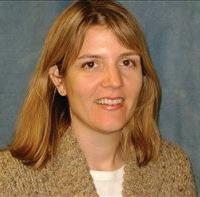
is a proud Navy wife, mama to two adorable little boys, writer and a prospect researcher at a small liberal arts college in Upstate New York. She loves living through the splendor of the seasons - even frigid snow-filled winters - at the foot of the Adirondack Mountains. When she isn’t freelance writing, she is writing fiction. She won the Scintillating Starts Writers Advice Fiction Contest in 2019 and is published in Flash Fiction Magazine. Emily is a graduate of the prestigious New York State Summer Writers Institute. She earned her B.A. in Journalism from St. Michael’s College and her M.A. in English and Creative Writing from Southern New Hampshire University.

Brunella Costagliola
is an award-winning author and bestselling editor. She was awarded the silver medal from the Military Writers Society of America for her children’s book, “My Dad Got Hurt. What Can I Do? Helping Military Children Cope with a Brain-Injured Parent.” She is also the owner and founder of The Military Editor™, an editing agency for military authors whose manuscripts need developmental editing, copy editing, proofreading, or publishing services. Brunella is also mother of two resilient military children and proud Air Force wife.
Lila Quintiliani is the Military Saves Program Manager at Consumer Federation of America. She is an Accredited Financial Counselor (AFC®) and holds a Bachelor’s Degree in East Asian Studies from Columbia University in New York City and a Master’s Degree in History from the University of California, Los Angeles. As both an Army veteran and a military spouse, Lila feels strongly about helping military families find financial success.

Separation is a constant fixture of military life. Whether it’s a deployment, extended temporary duty or advanced training, the requirements of a service member’s career lead families to adapt to long periods apart for months or even years. Being away from your loved ones never gets easy – my husband used to have a spreadsheet where he tracked the break-even point when he would have been with our daughters as many days as he had been away from them.
A little bit of preparation can ease a lot of the emotional and financial strain that comes from operating a household from two geographic points. Here are three ways to plan at all phases of the deployment process:
Before your service member leaves, it’s important to have a financial plan in place. Hopefully, you already established a spending plan, but if you don’t, now is an ideal time to try and build one . It’s vital to make sure that each person has a clear notion of who will be paying the bills, what accounts they will be coming from and when they’re due.
It’s also a good idea to use direct deposit and automate bill paying whenever possible. The person who is managing finances back home should have a valid power of attorney.

See if any of the provisions of the Servicemembers Civil Relief Act apply to you. Originally designed to reduce interest rates on loans taken out prior to active duty, many lenders will also lower rates for active duty service members who deploy. It never hurts to ask.
Be familiar with any special pay or entitlements that may apply to your situation.
Now is also a good time to discuss deployment goals that you can work toward together. For example, during my husband’s second deployment we made paying off our auto
loan a goal. We threw any extra money we had toward the principal, and after 12 months, we paid off the note.
Keep open lines of communication, and I don’t mean just sending the occasional email or direct message. Monitor joint bank accounts and credit cards closely.
This isn’t about trust: you will each need to know when the other one is accessing accounts, otherwise you may not recognize suspicious activity or identity theft. And if both of you are using the account without communicating that fact, there’s a chance you may overdraw the account (been there, done that!)
Take advantage of the Savings Deposit Program , which guarantees a 10% interest rate on deposits of up to $10,000. You won’t find a return on investment like that anywhere else.
Consider contributing to the Roth TSP while deployed to a combat zone. Because pay is tax free, your contributions, growth and eventual withdrawals will all be tax free!
Even though you tell yourself you won’t get accustomed to the extra pay and entitlements that deployments bring, you can’t help it, you still do.
Try not to make rash purchases in the first few days after reuniting. Your pay hasn’t settled down to its “normal” level and may not do so for weeks. Celebrate, for sure, but then get back to your routine.
Family separations are an inevitable part of the military landscape. Deployments can be difficult, but with proper preparation and some planning, you can use the time to set and achieve financial goals.










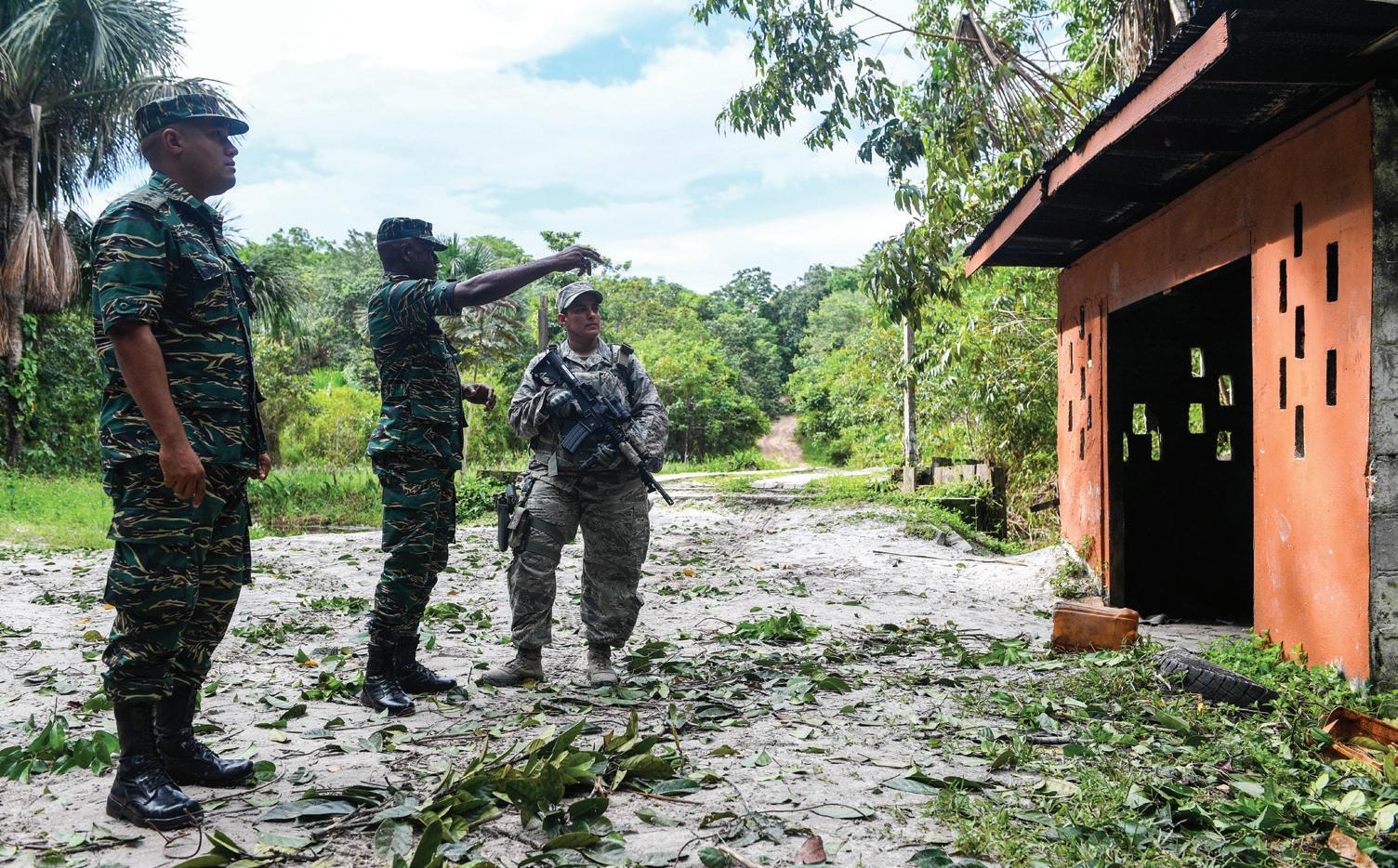 By Bianca M. Strzalkowski
By Bianca M. Strzalkowski
Building camaraderie, growing community and eating iguana have all been part of a typical day for soldiers, like Army 2nd Lt. Gabriel Kern, who are taking part in the New Horizons training rotation to Guyana.
Kern, who is part of the 276th Engineer Company from Pierce City, Missouri, joined the Army National Guard later in life at the age of 34. He was driven by the opportunity to participate in missions and training, and the recent exercise has not disappointed. Arriving in Guyana in June, his initial impression was the mission would be impactful.
“They don’t have a lot of infrastructure down here, and I could tell by our one-and-a-halfhour ride from the airport out here that a new building is a really big deal, especially one that’s built to standard and will last,” Kern said. “ … I realize why the military was putting so many resources down here because it really is a really good humanitarian mission.”
New Horizons 2019 is a training exercise to build community centers, clinics, renovate buildings and conduct medical readiness
training. Roughly 500 U.S. service members are responsible for the projects, including personnel from the National Guard and reserves.
Kern serves as the platoon leader of the second of four rotations, with his primary responsibility keeping 22 soldiers – including himself – on task to construct community centers by laying cinder blocks.
“We’ve been 100% focused on masonry work, checking symmetry, making sure everything is done to standard under the project manager and learning a lot from our mistakes
along the way,” he said.
A typical day starts with departing the base at 0600 to receive briefings on the job site from project managers, while working in partnership with Guyana Defence Forces. By nightfall, soldiers complete the tasks of the day and head back to their temporary quarters to play games like Monopoly or Spades.
Local reaction to Americans on the ground has been “overwhelmingly positive, very curious, very gracious and very thankful,” Kern adds, and he has gotten to experience some firsts.
“They [the Guyanese people] come by almost daily selling us fresh pineapple, hushpuppies – freshbrewed – really, really good stuff. I’ve also had iguana for the first time in my life,” he said. “It’s just some exotic experiences.”
A number of factors go into choosing which host nation to devote resources to, which includes needs of the population, training benefits and cost, according to the New Horizons Public Affairs Office. Once Guyana was chosen, the local government prioritized a list of proposed medical and construction projects.
Kern explains that even though there have been challenges, like learning the hard way that something was constructed wrong and having to start over, this is what soldiers join the military for.
“You enlist in the military to go travel and do stuff, and this is the exact example of it – both the work and impact, and then the camaraderie we have in our down time,” he said. “It has been a massive training experience that we will never forget.”
The tropical terrain has also given soldiers the chance to work with citizen airmen, like Air Force Tech. Sgt. Jovanna Diaz, a member of the 315th Security Forces Squadron, Joint Base Charleston. She is on the ground as part of security forces, initially arriving in April.


She describes the landscape as vibrant with green, but also saturated with very friendly locals who take pride in their country.
Diaz enlisted in 2009 after asking herself ‘how can I give back.’ Her role in Guyana has allowed her to compare notes with the GDF on training, policing techniques and different tactics.
“They’ve talked about the differences of their schooling and how they do things, and how we do
things. Some things are similar and some things are different,” she said.
Though there have been some areas to overcome, such as language barriers, she says there is tremendous value in the personal connections.
“We can send the resources all on their own but there’s no personal connection. No personal touch,” she said. “So if I go out to a site and I help their defensive forces with some sort of tactical way to approach something, not only do they have the information and see how we do it, but they have a name to it. They can say, ‘I remember Sgt. Diaz, and Sgt. Diaz said this is why we do it and this is why it’s more effective.’
I think a hands-on approach and putting a face to something is more valuable than just a piece of paper of something you send over,” Diaz explained.
Kern adds that his soldiers have discussed frequently just how this experience has reminded them of the abundance of resources they have access to in the U.S.
“All of us have talked about it in our down time, how grateful we are to have what we have – things we take for granted that we can see the people don’t have or have to repurpose things, which makes building things a lot harder. So
that’s been almost a daily discussion about, doesn’t matter how bad we think some things are back home, we have a lot to be grateful for. Very much on our mind.”
The New Horizons 2019 exercise in Guyana is expected to be completed by the end of August.

Efforts in the public and private sectors to recruit and employ veterans have contributed to a 3.8% unemployment rate for the more than 4 million veterans that served from 2001 to present, according to the U.S. Bureau of Labor and Statics. For the more than 19.2 million veterans over the age of 18, this is a positive employment forecast for life after the military.
Ted Avila, an employment specialist/disabled veteran outreach program specialist for the State of Hawaii, transitioned from the military six years ago.
“As military service members transition out of the military, they attend a transitioning seminar/ workshop. During this workshop they should be shown websites that address how to match specialty codes to civilian jobs for writing a resume,” he said.

Avila recommends veterans visit their American Job Center or Career Center where the veterans have priority of service and will be assisted with the development of resumes and cover letters specific to the job occupation/announcement. The AJC will also assist with job searches and matching military specialty codes. According to Avila,
the most lucrative positions are in the technical fields.
“Veterans who have the education, certification(s) and/or licenses and experience will be considered by the employer,” he said. “Don’t forget veterans need to practice interviewing skills to ace the interview. The resume and cover letter only offer the opportunity to be invited for the interview. The interview itself will determine if the veteran meets the employer needs, and employers assess how the veteran will work within the organization.”
Many veterans will pursue employment in their military occupational specialty, according to Dr. Derek Abbey, interim director of the Joan and Art Barron Veterans Center at San Diego State University.
“Some of the most common interests are engineering, business, criminal justice, social work and health fields. The most lucrative in recent years have been the STEM fields, specifically engineering. Cyber security is growing rapidly and in demand,” he said. “A bachelor’s degree is very important and, in many industries, an advanced degree is needed. However, there are many fields where a bachelor’s degree
is not needed. There are many technical fields that pay well. Some require things like a technical certificate or apprenticeships. Many of these fields are shorthanded in skilled workers to fill positions.”
Some fields that translate well from a service member’s career are:
• Engineering: BLS projects nearly 140,000 new engineering jobs from 2016 to 2026. In 2016, engineers had a median annual wage of $91,010, more than twice the median wage for all workers.
• Business and Finance: BLS projects business and finance to grow 10% from 2016 to 2026, faster than the average for all occupations, adding about 773,800 new jobs. The median annual wage for business and financial occupations was $68,350 in May 2018, which was higher than the median annual wage for all occupations of $38,640.
• STEM: BLS projects employment in science, technology, engineering and mathematics will grow to more than 9 million from 2012 to 2022. Although median wages vary, the median annual wage of architectural and engineering managers top out at over $128,000.
• Social Work: BLS projects social work and health service occupations to grow 16% from 2016 to 2026, much faster than the average for all occupations. Employment growth will be driven by increased demand for healthcare and social services, but will vary by specialization. The median annual wage for social workers in May 2018 was $49,470.
• Cybersecurity: BLS projects cyber security occupations to grow 28% from 2016 to 2026,
much faster than the average for all occupations. The median annual wage for cyber security operations was $98,350 in May 2018.
Education is another option for veterans. Yale University in New Haven, Conn., graduated five student-veterans in 2018. Three now work in finance, one attends Yale Law School and one is studying for his doctoral degree at Oxford University as a Gates-Cambridge Scholar. All of these students were members of Yale’s Eli Whitney Program, designed for individuals with high academic potential who have had their education interrupted, at some point during their educational careers, for five or more years.
Patricia Wei, director of Veterans Outreach in the Office of Undergraduate Admissions at Yale University, details opportunities available to veterans in higher education.
“These programs may aid veterans as they navigate their education after leaving the military,” Wei said.
• Yellow Ribbon: A scholarship program that allows approved institutions of higher learning and the VA to partially or fully fund tuition and fee expenses that exceed the established thresholds under the Post-9/11 GI Bill.
• Service to School: A program

that provides free application counseling to military veterans.

• Warrior Scholars: A transition program consisting of a series of highly intensive, totally immersive, one and two-week college-preparatory academic boot camps hosted at America’s top colleges and universities.
San Diego State University and the Joan and Art Barron Veterans Center supports
veterans through a variety of programs.
“We work with students to determine where they are at and where they want to strive for as a profession or education,” Abbey said. “Often SDSU is not the best fit for students, so we work with them on finding the best college or university for them.”
Abbey recognizes for many veterans transitioning to civilian employment is overwhelming. “We work with them to ensure they have the resources available to perform academically at the highest level possible,” he said.
Several resources exist to assist military-connected job seekers conduct searches geared toward specific military skills, including a tool from Google. Users can put “jobs for veterans” in the toolbar along with the MOS code: https://grow.google/ programs/veterans-commitment.

Navy Reserve Lt. Cmdr. (sel) Jesse Iwuji — a NASCAR driver, Naval Academy graduate and former college football star — won’t let anything get in the way of making his dreams come true.

“I wrote it on my whiteboard and started pursuing it,” Iwuji said about envisioning his goal. “And through a lot of hard work and grind, four years later I’m racing in the NASCAR truck series.”

His NASCAR career has only begun, too. Iwuji’s ultimate goal is to get into the NASCAR Cup Series, which is the top division in NASCAR and has detained big names like Dale Earnhardt and Jimmie Johnson.
“I want to get there and eventually be in a position where I can win races and then eventually win a championship in that series,” Iwuji said. “That’s what I want to work towards.”
Iwuji’s adoration of cars began as a child watching the classic cartoon show “Speed Racer,” but he never saw himself as a driver until much later in life. It wasn’t until he was deployed on the USS Comstock in the Northern Arabian Gulf that he started to look beyond his Naval career. There, he and his best friend,
Ryan Hogan, would talk about their futures together into the early morning hours of duty.
“There were many of times when we were floating around in the NAG, and it was 3 o’clock in the morning and we’re just sitting there, you know, talking about life experiences and where we wanted to be,” Hogan said.
As an entrepreneurial guru, Hogan listened to Iwuji’s dreams of creating a drag race event, and gave Iwuji some of his first business tips.
The Red List Group that now hosts an ongoing drag racing series in Southern California.
“He understands that if he puts his mind to it, he can make things a reality,” Hogan said. “I think as soon as we got back from deployment, one, he created the event. … And then the second part — and this is the part that is just mind-boggling to me and is just truly impressive — is he started racing in NASCAR Whelen series,
and then he has just blazed through all of these different brackets in NASCAR. It’s just because he doesn’t know how to fail.”
Iwuji isn’t blinded by the challenges ahead of him, either. His path includes frequent public appearances all over the country, squeezing in time to train even in the wee hours of the night, and creating a balance in also fulfilling his pledge to the Navy Reserve. He has another 11 years until he fulfills a 20-year tenure, something he is also determined to achieve.
“Balancing it,” Iwuji said, “it hasn’t been too bad, but there have been some tough times. Being in the reserves, we have to do our drill one weekend a month, two weeks a year. I have had some different drill weekends where I had a race that was on the same weekend and I had to rearrange my schedule.”
Yet his commitment remains solid. He cites a time that he did a race in Las Vegas, Nev., on a Friday night, then drove overnight to Coronado, Calif., to make it to his scheduled drill weekend. The dedication to anything he puts his mind to is evident, and is only one of the traits he has picked up throughout his lifetime.
“Service, what it’s taught me, is just being able to be super resourceful.
I think that’s one of the biggest things we learn in the military. A lot of times we are given a little and we are expected to make a lot out of it. And that’s what we do. We do it because we have to. There is no other choice,” he said.
He adds that the military also taught him how to present himself in a professional manner to anyone he meets, be a team player and act as an ambassador for the U.S. and NASCAR. As he continues to go up the parabolic ladder, each of those traits will contribute to his success in addition to the support of his fans, who he is relying on to support him and recruit more of.
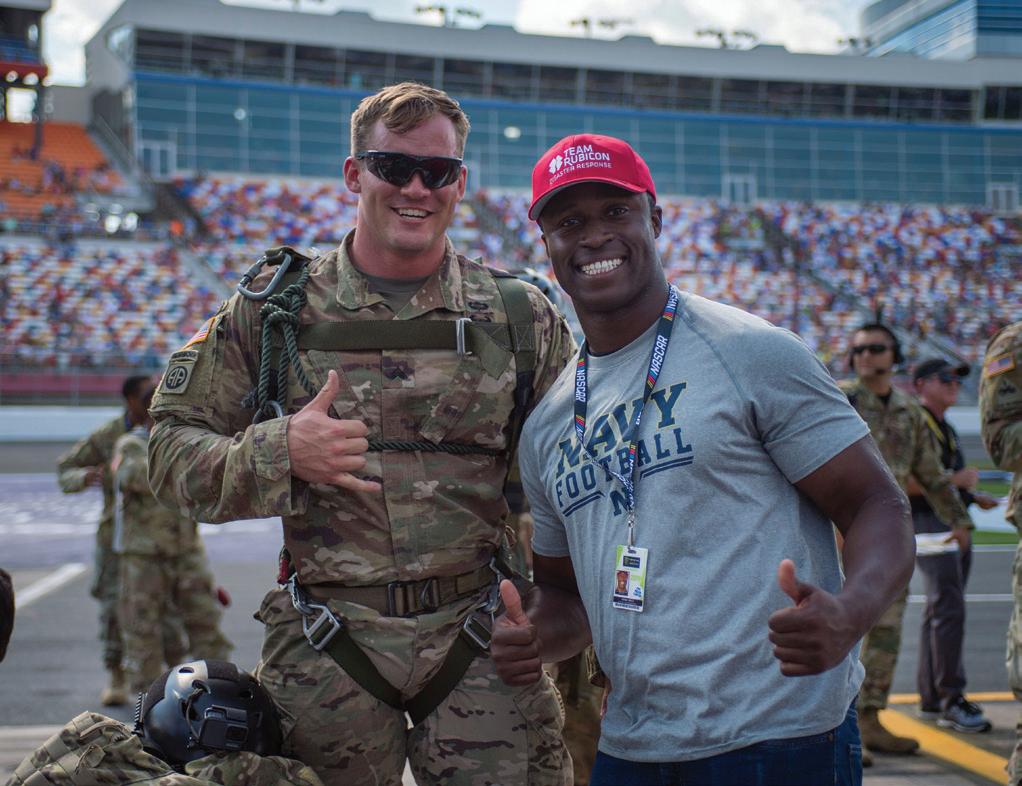

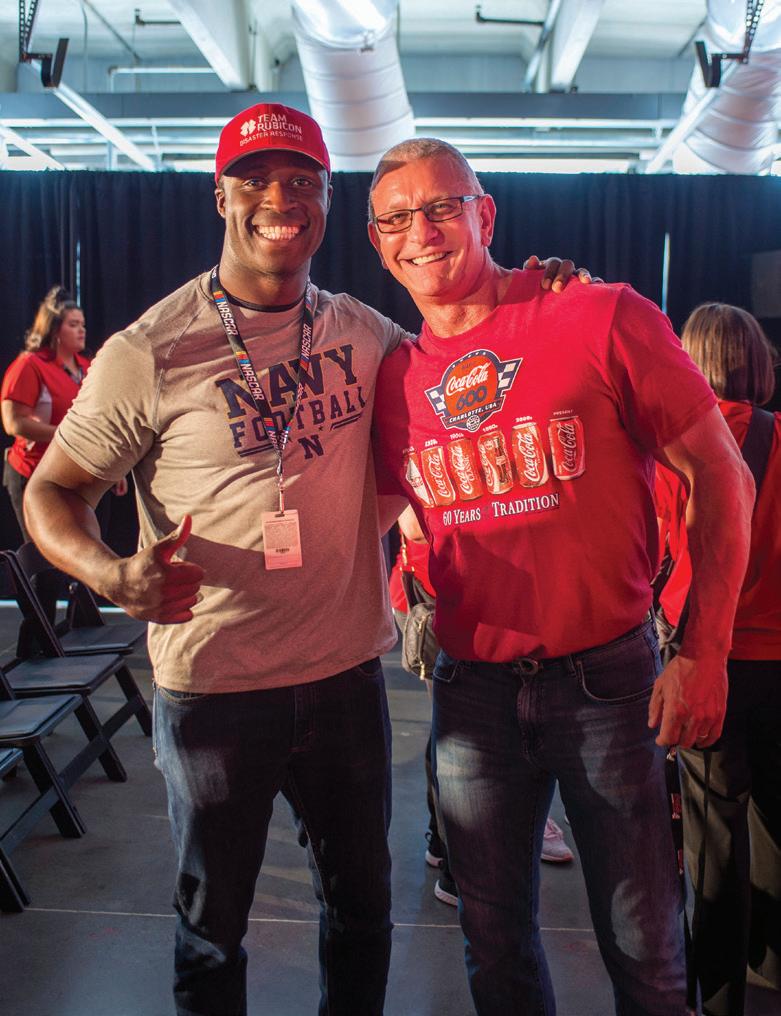
“He’s going to be a NASCAR driver,” Hogan said. “Like, there is no doubt in my mind. He will figure it out. I feel like I should be fanboying him right now and calling him constantly, because he’s going to be rubbing elbows with all the greats. Other people will be surprised, but I feel like I see who he is.”
Iwuji, though, doesn’t feel like he is an anomaly in success, because he can attest to how hard dream chasing is. He has gone through very challenging times in achieving his goal,
and says that if people can believe in themselves even when the metaphoric lights are turned off, they’ll also make it through, and they’ll achieve whatever they put their hearts to.
“You have to fully, insanely believe in yourself, and believe that your goal is going to come true. That the vision that was is in your head, seeing yourself doing whatever it is, that it will come true. You have to believe that. You have to fully believe it without letting anything stop you from believing it,” Iwuji said.
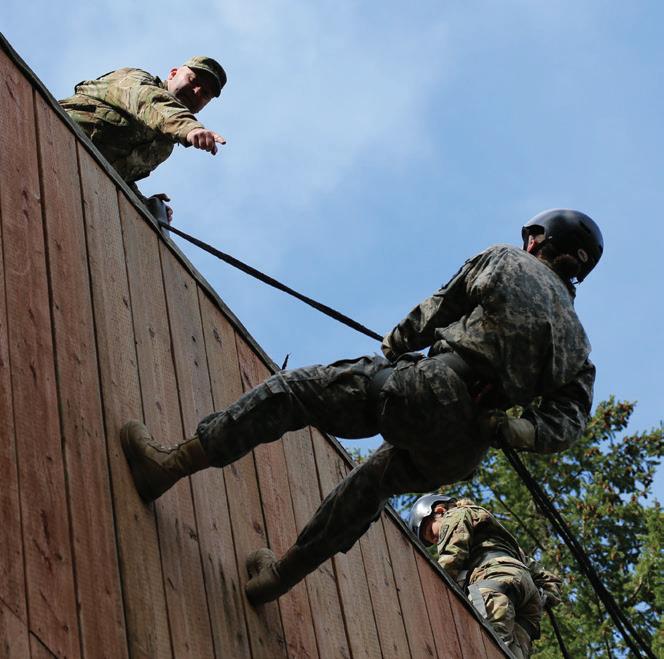 By Julie Provost
By Julie Provost
Well it’s that time again, time for my soldier to go to drill. I have been doing this for almost five years now, and for the most part, I am somewhat used to the schedule of the National Guard. When he first transitioned from active Army, I learned pretty quickly how this was going to work. There would be monthly drills, there would be AT, and there could be a bit more than that, too, depending on what happens as far as natural disasters, mobilizations, etc.
However, the monthly drills are a routine fixture of National Guard life for us. If you are new to this community or if your spouse is considering joining the reserve component, you may be a bit curious about what happens. Here is your guide to the ins and outs of a monthly drill weekend:
Drill weekends will be different lengths depending on what is going on. Usually they will be two or three days, sometimes up to four days, or occasionally just a single day. There have also been a couple of times when a one-day drill became a family day. Your service member will get paid based on the time commitment required.
Your service member will be paid according to how long their monthly drill is, their rank, and length of service. You can view 2019 drill rates at https://militarybenefits. info/drill-pay. During a monthly

drill, they will not receive any type of housing allowance like they do during their annual training. Payment will occur roughly 10 days after drill weekend.
Are dates set in stone?
Dates can change, and they do –that is common of anything and everything in the military.
This is important to keep in mind. While your service member will get a new schedule for the fiscal year, they will get updated ones during the rest of the year. That means if you plan a weekend away for March in November, you might have to reschedule if things change. Not all dates change, but it is important to remember that they can.
Will they spend the night?
This will depend on the monthly drill. Sometimes my husband will not come home at night, and other times he does. If they stay local, he usually does, unless they go to the field. Sometimes they travel a few hours away and stay the night. Going into the National Guard, I thought he would be gone overnight every weekend but this is not the case.
The drill weekends usually turn out to be once a month, however, that can mean three weeks in between, or even up to six weeks. For example, he could have drill the first part of August and then not again until the last part of September. Sometimes after AT they might have more time
in between and once, drill has been cancelled. Every year has been a little bit different.
How do you get through drill weekends?
In the scheme of military trainings and time away, drill weekends are probably the easiest thing you can go through. That being said, that doesn’t mean they are easy. You will still have to deal with lonely nights and if you have children, they might not understand why their parent is gone during drill weekend. The best thing to do is stay busy and make plans. Staying home all weekend is probably not the best choice but this can depend on your personality. Having a drill weekend tradition can also be fun like ordering Chinese food or taking the kids to the movies every time they have it. It is also a great time to consider making plans with other families from your unit.
While everyone’s experiences might be a bit different, this overview can help you somewhat manage expectations. As always, communication is key so talk to your spouse about any questions you may have.


Deployments are a fact of life in the military. No matter what branch you serve for, your number is likely to get called at some point.
My number was called five times during my six plus years on active duty. The final deployment was actually voluntary. My unit was short on qualified airmen and I had no immediate plans after my scheduled ETS date, so I signed a six-month enlistment extension and deployed with my squadron.
Should you raise your hand or wait to be called?
Each military branch is different, so you may not have a choice when it comes to deployments. If your unit is called, you’re going – end of story. That’s an expected part of the job. However, there may also be reasons you seek out a deployment opportunity, either as part of your unit or as an augmentee for another

unit downrange. Sometimes there are more people in your unit than open deployment billets, so volunteers are taken first.
Should you raise your hand? Or wait to be called?
I can’t answer that question for you. But we can look at this decision together.
Comparing pros and cons is a great way to analyze difficult decisions. Most people think about the downsides of deploying first – being away from your family and civilian employment, hurry up and wait, spending months in a dangerous location, being bored out of your mind waiting for something to happen, then wishing it didn’t happen when it did.
None of these are fun, and it’s easy to fixate on them.
So, let’s put those aside and focus on the benefits of deploying as a member of the reserve component.
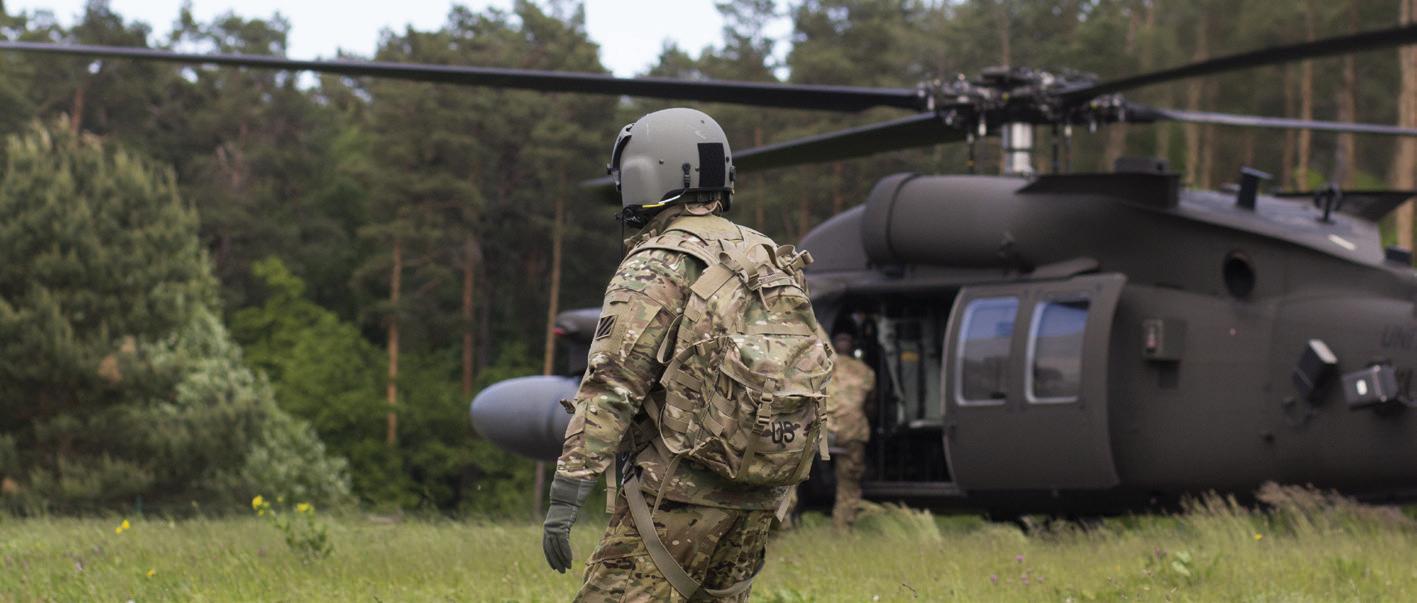
Deploying can help your career. Deployments and the increased responsibilities look great on your enlisted or officer performance report. Deploying doesn’t guarantee a promotion, but you will almost certainly return to your unit and your civilian life as a better person.
You can earn veteran status. Simply serving in the reserve component isn’t enough to earn veteran status or eligibility for certain veteran benefits. You must also serve on active duty. Most deployments are six months or longer, which is enough to earn veteran status and eligibility for a variety of benefits.
VA loan eligibility. Reserve component members can earn VA
loan eligibility after serving 90 consecutive days on active duty. Otherwise, you would need to serve a minimum of six creditable years to be eligible.
Post-9/11 GI Bill eligibility. The GI Bill is one of the most valuable veteran benefits. However, it can only be earned on active duty. It takes three years of active duty service to qualify for full Post-9/11 GI Bill benefits, but as few as 90 days of active duty service qualifies veterans for 40% of the Post-9/11 GI Bill.
Veterans earn an additional 10% of the benefit for each six months they serve on active duty. For example, a six-month deployment is good for 50% of the benefit, 12 months equals 60%, and so on.
Pay and benefits are very good. I’m sure you’re already familiar with the active duty pay charts for your grade and time in service, but being activated opens the door to other allowances and benefits, including BAS, BAH, TRICARE for yourself and your family, Family Separation Pay, and other benefits.
Some organizations offer employees additional benefits. Some companies offer differential pay if your military pay is less than your civilian pay. Some state and federal jobs will also allow you to double-dip, and receive your civilian pay while you earn your military pay, at least for a certain
number of hours or pay periods. And virtually all organizations allow you to retain your seniority within your organization. Finally, your job is protected under The Uniformed Services Employment and Reemployment Rights Act of 1994 (USERRA).
Early retirement pay. The normal reserve retirement age is 60. However, Reservists who were mobilized after Jan. 28, 2008 are eligible to receive their retirement pay three months early for each aggregate of 90 days of qualifying active duty service.
A chance to better yourself. Deployments are a great time to get fit, take classes, dive deep into a hobby or otherwise spend several months becoming the best person you can be.
Memories and experiences. Not everything can be boiled down to pay and benefits. Deploying can change you in many unexpected ways. Friendships forged, experiencing different cultures, seeing different countries and landscapes – all of these can remain with you for a lifetime.
I can’t tell you whether or not you should raise your hand and volunteer if the opportunity arises, but from my own personal experience I can say that I have come back from each of my deployments as a better person.
First, I would like to say that I am truly honored to be able to share a part of my story with you. This is a once-in-a-lifetime opportunity and I am beyond blessed to have it.
Because I am a part of a military family, I have had the opportunity to see various parts of the world and live in different cultures. I would like to share with you specifically about my four years of high school. During these years, I have moved two times and have been to three different high schools across the country. Many people looking from the outside in ask me how I do it and seem to be amazed with my answer.
I was born and raised in Birmingham, Ala. All of my family and lifelong friends are there, along with the first high school that I attended. I attended Vestavia Hills High School for the beginning of my freshman year before moving to Maryland in early spring. This was my first move ever, which did not make it any easier. It took a while before I got the hang of bigger city living, like D.C., and for me to feel like I was beginning to fit in.
As time passed by, I found new friends in a totally new place and began to fall in LOVE with the Maryland shores and fresh crabs! I was introduced to private, Christian education and the loving attitude that came with it. I had so many great opportunities to play sports
and be involved in ways I never thought I would, or that I would not have had if we stayed in Alabama.

I was also given a mentor at my new school, whom especially took interest in my life and my story. Together we would talk about life, people, drama and, well, whatever was going on. The best part was the prayer. We spent a lot of time together praying for life. When my family and I found out that we were moving to Central Ohio, it was especially hard to leave because of what I had been a part of for the last two years.
Once my family moved and got settled in Ohio, I began to realize the impact that I had on my last school and began looking for ways to do the same again here. I quickly met new friends and saw different areas in school where I could help.
Throughout the 17 months that I have been in Ohio, I have seen many positive changes take place at my now third high school and have had
Campbell Miller is Operation Homefront’s 2019 National Guard Military Child of the Year. The 17-year old high school student has been a member of the National Honor Society, captain for varsity baseball and cross country, and taken mission trips to Guatemala, Ireland and Uganda. More recently, he was able to accomplish becoming an Eagle Scout in the midst of relocating from Maryland to Ohio — an achievement he credits with coming from the willpower of being a military child.


the opportunity to be a part of them. I now see the school as a better place than when I got here. I learned to never underestimate the impact we can have on those we meet and new situations we are put in.
I would like to leave a word of encouragement for other military kids, something that I have learned during my time in high school: Be present where you are.
No matter where you are, be present with the people you are with. Being present can lead to some of the best lifelong friendships and enjoyment of cultures you may have never had the opportunity to. Seek to find the good in every move, every situation, every person you meet. Realize that you are making a difference. Because of your experiences, you view life from a different lens.
Always remember that you are where you are for a reason, don’t lose sight of that.
Introducing the new United Through Reading App


In just a few minutes, stay connected to a child you love with United Through Reading. Download the UTR app, grab a book, and record a bedtime story your child can watch again and again, easing the stress of separation while also promoting good reading habits. For more info, visit utr.org/app or email appsupport@utr.org.

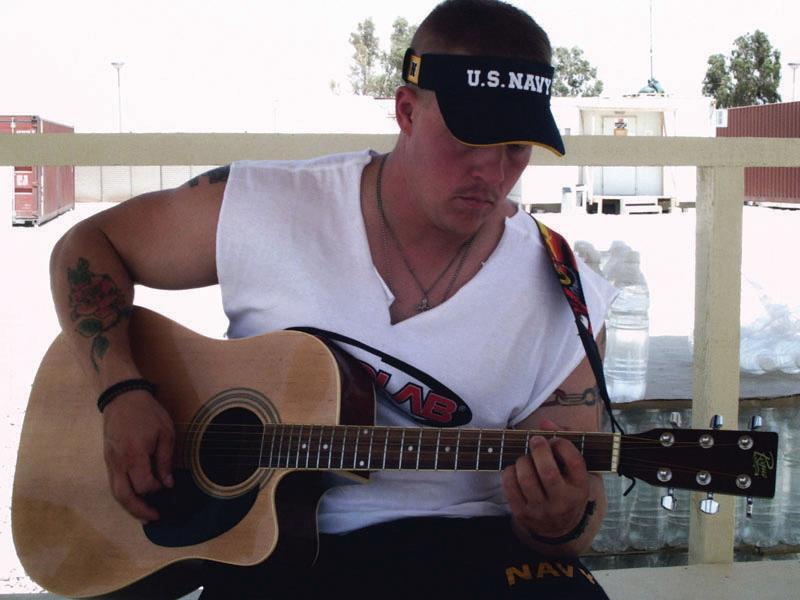 By Crystal Kupper
By Crystal Kupper
Balls bounce and kids shout in the seventh-grade P.E. class he teaches in Houghton, Mich. His keyboard clicks as he deals with mundane emails and announcements from his office. At home, his three adult children visit while his sevenmonth-old babbles in their arms. His wife, Erin, tells him she loves him. When he’s feeling sad or inspired, he picks up his guitar and starts playing.
It’s that strum of the guitar that bridges the 49 year old back to the sounds of his former life: the winds whipping through the Iraqi sands, the barked instructions to his fellow Navy Corpsmen as they tended to the injured, the late-night campfire jam and journal sessions where he stared at the stars and wondered who would survive Operation Iraqi Freedom and who wouldn’t.
Hauswirth keeps strumming as another sound plays through his mind: someone heartbrokenly announcing that his friend, Navy Petty Officer 2nd Class Jaime Jaenke, didn’t make it.
“She was so friendly and she got along with everybody; I don’t think there was a lot of negativity about her from anyone she worked with,” Hauswirth remembers. Then, as if snapping back to his professional training — “Seabees can do,” after all — he says, “She had really good medical skills.”
Yet all the medical skill in the world couldn’t save Jaenke, so Hauswirth keeps singing, the minor chords offering a haunting accompaniment to his bass voice:
Thought you’d get out and rule the world/head on home and raise your girl/thought you’d conquer it all/but we all thought wrong…
Hauswirth had already served five years as an active duty sailor when he joined the reserves. In 2005, he met Jaenke, a mother of an elementary-schooler from smalltown Iowa, when he assisted with her training. And the following year, both deployed to al Asad, Iraq.
He had never lost anyone to violence before, but that year, his battalion suffered three causalities. Jaenke was one of them. She was killed June 5, 2006 when her Humvee was hit by a roadside bomb in the Al Anbar province.
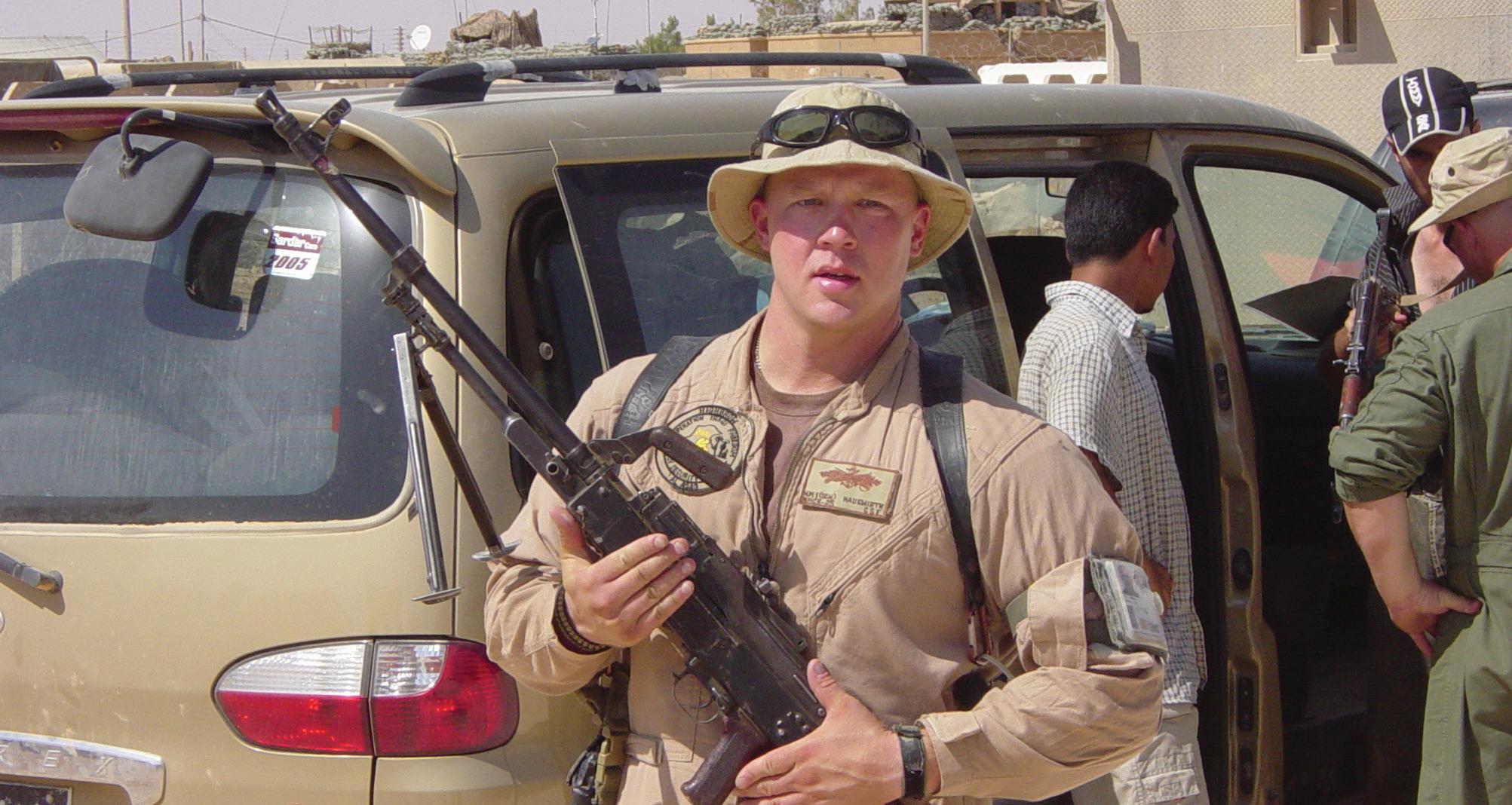
She was only 29 years old, a detail that struck Hauswirth hard.
“When I was 29, I had two kids, one on the way and was just starting my teaching career,” he recalls. In some ways, it seems like a lifetime ago, highlighting how much life Jaenke has — and will keep — missing. Yet his own life kept plugging ahead, first returning to the States and next resuming his career and family life.
But his friend would stay 29 forever. So Hauswirth, a self-taught guitarist and singer, started songwriting. “Forever 29” was the result, but it wouldn’t leave the page for a decade. It was just too raw and painful.
“One of the psychologists who talked to the battalion, before we left, one thing he said was, ‘You never come back through the door you left,’” Hauswirth says. “Because [war] changes you, whether you lose somebody or not. It changes you.”
And true to form, it had changed Hauswirth. To the rest of the world, he was a success story: he earned his master’s in exercise science (his bachelor’s was in education); he had a beautiful family; he held down an honorable job; he wasn’t addicted to drugs or alcohol. But inside, he knew he needed to create, to honor a loss that still swept through his thoughts every day.

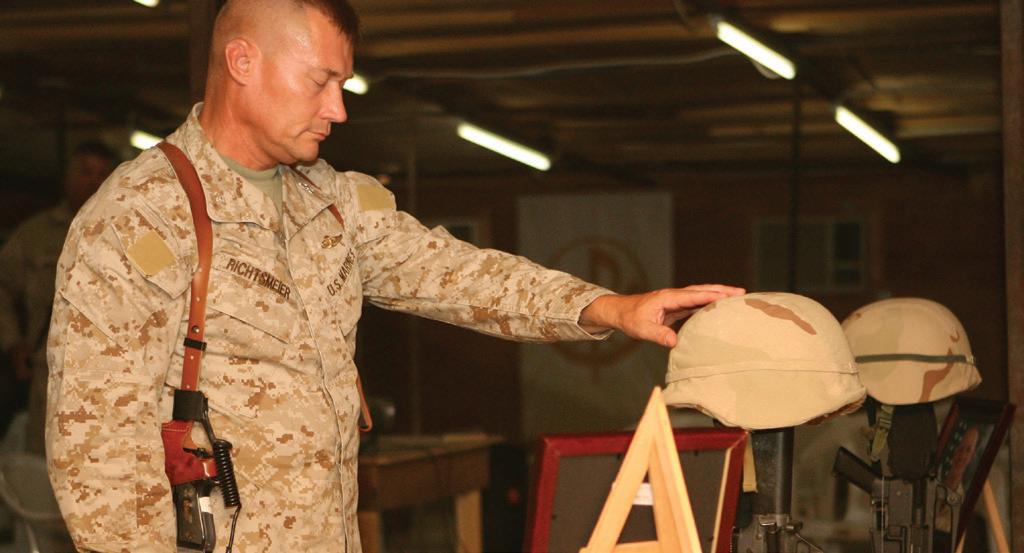
In 2018, Hauswirth completed a veteran’s entrepreneurship program through the University of Tennessee-Chattanooga, and while there, met a speaker who had music connections in Nashville. From that meeting eventually came studio time and a six-song EP called Forever 29 . The EP, released through Hauswirth’s Humvee Records, LLC, debuted April 26 on all digital and streaming outlets.
The title track, of course, refers to Jaenke, while three others are based on Hauswirth’s military experience. The former corpsman (he retired after more than 20 years of combined service) not only wrote and sang every song but will donate a quarter of the proceeds to the USO.
Each song reflects a man who feels both the agony and the beauty of life.
“I felt a little bit of guilt [after coming home], because I know there were people who didn’t,” Hauswirth says. “I feel bad for anyone I met for the first year or so after, because I don’t think they met the real me — you’re still in that
transitional mode.”
Indeed, “Part of you stays there [in the warzone],” he says thoughtfully. That hard fact bubbled up as he recorded, not just singing each song once or twice but again, again and again, meaning that the pain hit him fresh with every lyric.
Still, “It wound up being good, long-needed therapy, because there was a lot I didn’t realize I was dealing with,” Hauswirth admits. “Maybe, in a way, if [this EP] can help somebody else, then I’m okay with that.”
Though music has helped him heal, the scars will always be there, something all the success in the world can’t erase. But imagining what Jaenke would think of Forever 29 helps, in its own small way.
“I would hope she would like it. She’d probably laugh and call me a baby,” Hauswirth says, laughing himself at the thought.
Then a pause, his voice tinged with both woundedness and wonder. “I would hope she would see the honor of it.”
For most of the United States, summer’s arrival means a threemonth stretch of barbecues and beaches, sunburn, sand, fireworks and Frisbee-tossing. It means the same for the nation’s National Guard members — only they have a required commitment to fulfill.
And unlike Grandma’s potato salad, AT changes every year.
“Training time is precious… That’s why the Guard uses many unique training methods,” reads the
National Guard’s official website. “From ‘real-life’ training exercises… to high-tech simulation training and distributed learning, the… National Guard…give[s] its members access to high-quality training.”
Given that the National Guard is comprised of both Army and Air units in each of the 50 states and four territories, that translates into a wide variety of AT activities, locations and focuses.
Dive in, then, to a sampling of how other units are doing AT in 2019.
While some of New Mexico’s 2,800 Army and 900 Air National Guard members have already completed AT, several companies, battalions, brigades and a wing still have theirs to look forward to. When “The Land of Enchantment” maps their units’ 2019 AT locations, it sticks pins in Colorado, Iowa, Indiana, Michigan, Alabama, Pennsylvania and even Germany.
However, some are sticking close to home, such as the 515th Combat Sustainment Support Battalion and 920th Engineer Company. In July and August, each will conduct AT at Camp Navajo, Arizona, to provide horizontal construction support to the Navajo Nation.
“Sometimes Annual Training benefits the civilian community directly, as with our engineers providing horizontal construction support — namely road improvement — to the Navajo Nation,” said Douglas Mallary, a public affairs specialist with the New Mexico National Guard.
“Annual Training also benefits the civilian community indirectly by ensuring our units are trained and ready to respond to state emergencies when so ordered by the governor of New Mexico.”
A neighbor to the northwest is similarly remaining close, too. While AT has previously taken place in far-flung locales like Korea, Oman and Europe, Oregon’s 7,800 combined Guard members will be conducting this year’s training around the Beaver State, as well as in Washington and Idaho.
Financially, Director of Public Affairs Stephen Bomar at the Oregon Military Department points out, AT is a boom to the state.
“Annual training ensures missionreadiness and also provides the economy of Oregon more than
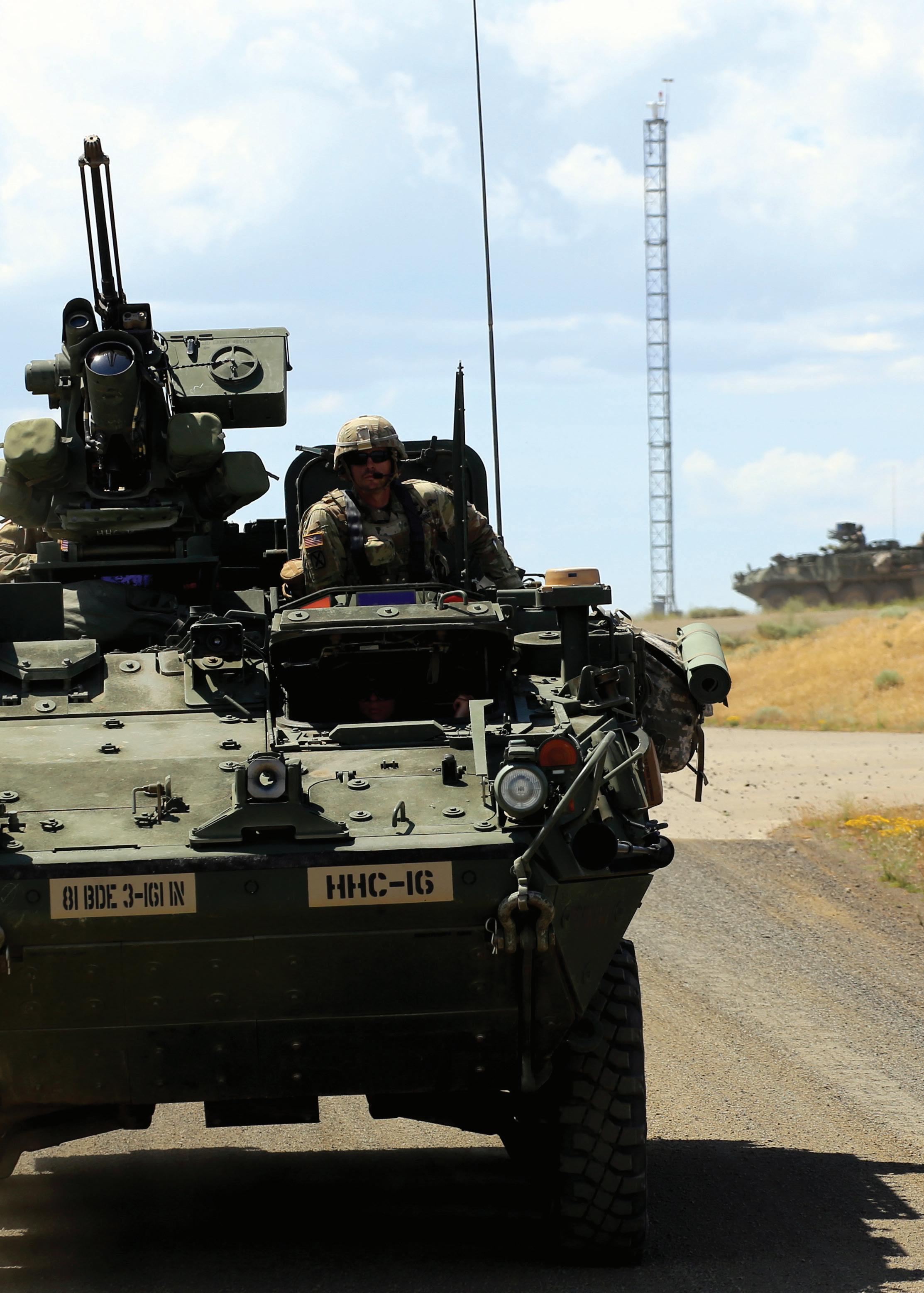
$350 million annually through pay and construction, while providing mission capabilities to support state and nation,” Bomar said.
For some units, AT isn’t simply a perennial get-together; it’s a critical step to upcoming deployments, as with Washington State’s National Guard. Four thousand Washingtonian men and women will participate in Exercise Bayonet Focus this year at the Yakima Training Center.
The field training exercise, says State Public Affairs Officer Joseph Siemandel, “is a requirement before the 81st Brigade’s National Training Center rotation in June 2020 to prepare for a possible overseas deployment” in 2021.


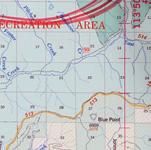





“Our Guardsmen are trained to be leaders; this [AT] tests their ability to be leaders on the battlefield,” he said.


And though the battlefield is a constant factor in military training, it is not the only consideration. Often, the Guardsman’s civilian life plays a critical role, too.
“We feel the training we provide… helps make them better in their civilian job as well as [in their] communities,” said William Prokopyk, an assistant public information officer for the North Dakota National Guard. Though some of his state’s units are training at home or in nearby states, one brigade is headed to Europe.
The state of Iowa believes so strongly in the military-civilian career connection that they organize transportation for local employers to observe training activities.

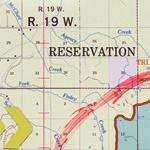


“We recognize it can be a hardship to have employees gone, but we believe the opportunity to be part of military training makes them better employees,” said Col. Michael
Wunn, a spokesman for the Iowa National Guard. At least threequarters of the Hawkeye State’s combined 8,800 National Guard members, Wunn points out, have civilian careers and heavily benefit from outside training.






“The leadership and supervisory skills you bring back when you’ve been responsible for a company full of soldiers — you take those back and use them in your civilian career. It’s a direct benefit for both military and civilian [sectors],” he said.
And especially for America’s spread-out territories, those skills can sometimes be the difference between life and death, panic and organized chaos.
“Being so far away from the mainland, our troops train for any contingency here,” said Luis Orengo Roman, chief public affairs for the Puerto Rico National Guard. “We have to rely on ourselves for the first

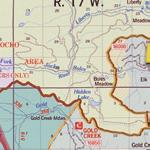

couple days after any island weather front. Once everything’s set down, the first face [Puerto Ricans] want to see is the Guard, supporting and helping.” The completely bilingual 8,400-member guard will hone their AT skills both on the island and around the mainland this summer.
No matter the size, location or language, each guard unit not only trains and refines at each AT, New Mexico’s Mallary says, but gels and enjoys, too.

“Unit members form lasting friendships with their National Guard colleagues, but sometimes only see one another during drills and Annual Training, which provide comradery,” he said.

Friendship and fun, trips and teamwork, oceans and outings — perhaps, in some ways, AT is as all-American as the very ones the National Guard is working to protect and assist.


themselves as its plank owners.”
Such planks are at least three years in the making, as the Air Force Space Command noted the need for a dedicated space control squadron in 2016 before receiving congressional authorization last year. Federal recognition of the 138th came in May as part of the 233rd Space Group, 140th Wing, Colorado Air National Guard.
“Right away, as soon as we got the authorization on manning, we started hiring both full-time and drill-status Guardsmen,” Maj. Stephanie Myers, director of operations, said. “We quickly started to grow.”
And not a moment too soon, as the 138th joins only three other space control squadrons in the nation.
The Colorado National Guard held a ceremony in June to recognize the establishment of an inaugural unit as part of the defense department’s plan to expand into the space domain.

The 138th Space Control Squadron, led by Air Force Lt. Col. James Reeman, is responsible for providing global space electronic attack capabilities in support of global and theater campaigns, according
to a press release. During the stand up ceremony, the commander leaned on a more recognizable Navy analogy to describe the vital role of the unit’s personnel.
“When they commission a ship, all the people who are a part of that process are plank owners or plank holders,” Reeman said. “They actually own a plank, because each of the members participated in the ship’s construction. Our members really were a part of this process and should be proud to think of
“In a contested domain scenario, an adversary wants to not only deter our ability to wage war, but also affect our citizens,” Reeman explained. “That capability [to affect civilians] certainly exists, and is one reason there is so much emphasis on protecting our [space control] capabilities.”
It’s a question the new unit commander fields regularly.
Envision, he says, all the aspects of American life that rely in some way on electronic signals: our vehicle’s navigation systems, card readers at gas pumps and ATMs, cell phones, etc. If an enemy wanted to seriously throw a wrench in the United States’ commerce, trade, communications and even weather tracking, disrupting our “space” by blocking or scrambling our electronic signals would be an incredibly effective way to do it.
But Reeman and Myers add their squadron is staffed with leadingedge technology experts who are incredibly good at their jobs. Nearly 100 airmen staff the squadron in eight different specialties including cyber specialists, radio frequency technicians and space operators. And when they need to, they can work together as “electronic warfighters” to defend U.S. systems.
Myers has been a space operations officer for more than 15 years. She says the squadron is a quality mix of “existing Guard members who wanted to take on the challenge of standing up a squadron” and “brand new recruits straight out of high school.”
Each airman of the 138th receives training at Vandenberg AFB, which covers crucial elements of space control like basic orbital mechanics and satellite control. And just as foundational is the civilian link between the space and technology fields and national defense goals, Reeman said. Many squadron members also work at employers like Boeing, Lockheed Martin, Raytheon, United Launch Alliance, SpaceX and other space- and technology-related companies.
“What we’re able to do is take innovative, out-of-the-box thinkers who have civilian expertise and leverage that to work for the Air National Guard on a part-time basis,” he said. “We’re pretty

selective about who we hire, but it’s exciting to be able to build that team and get them ready to be space warfighters.”
“Get them ready” is a key phrase, as decades ago, space control didn’t truly exist.
“Space for the past couple of decades wasn’t really seen as a contested domain,” Reeman says, mirroring how oceans used to be viewed as belonging to everyone. “But now, people can develop technology to make it not as available to everyone who needs it.”
It’s the prime reason why the new squadron now exists, as Myers predicts the squadron “is going to deliver an expertise and longevity in space control” that will long outlive her tenure.
For now, personnel are working in temporary offices aboard Peterson Air Force Base in Colorado Springs, Colorado, while waiting to break ground on a permanent facility this upcoming winter or spring. Reeman describes his team as being on “the leading edge of being space warfighters.”


Myers agrees, pointing especially to the engineering and technology students who have joined the squadron and the expertise they bring.
“The 138th is going to bring a breath of experiences that help us look not only at what we have now and how can we apply it in new and different ways. … but how can we keep learning and advancing in ways that put us at the forefront of space control,” Myers added.
Former airman Jeanita Kennedy helps fellow veterans cope with and overcome post-traumatic stress disorder through energy work and Navajo healing ceremonies.


The use of Complementary and Alternative Medicine — an umbrella term to describe healing approaches that are not standard practice in Western medicine — is becoming widespread among veterans suffering from PTSD, as reported by the U.S. Department of Veterans Affairs. In fact, out of the 599 veterans who were diagnosed with PTSD in 2013, 39% of them disclosed using alternative methods to address their symptoms.
CAM treatments include meditation, yoga, energy work and Native American healing rituals. Many can agree that Native Americans have always understood the importance of healing a warrior’s spirit from the poison of battle trauma, and they have done so through their holistic ceremonies.
Kennedy belongs to the Red Streak Clan of the Navajo Nation that the U.S. Census Bureau claims is home to over 7,500 veterans. After being raised on an Arizona Navajo reservation, she joined the Air Force and deployed to the Middle East multiple times before separating in 2008. Kennedy now lives in Minot, N.D., with her children and husband, who is in the Air National Guard.
During the interview, Kennedy spread her healing elements — satchels and feathers — across my dining table. She then took a small jar filled with red powder from her medicine bag.

“This is red sand from back home,” she explained. “I use it to draw red streaks on my cheeks and on the inside of my arms because I need it to protect myself from negative energy that might want to hurt me.”
Three years ago, Kennedy felt a sudden pain in both of her hands. “It was terrible, I was suffering very much from throbbing and stabbing pain that lasted three months.”
The pain interfered with her career as a well-known photographer who routinely had a waitlist of several months. She felt that she was one of the most sought-after photographers catering to the Minot Air Force Base community.
Soon after the pain started, Kennedy knew she was receiving the gift of healing. “I always knew I was gifted, as my ancestors were healers as well.”
Kennedy called her mother, who still lives on the Navajo reservation. “I told her I was going back home to see her so she could help me with the pain.”
Once there, her mother placed in front of her daughter ashes from a fire, Native American medicine bags and played Native American songs.
“OK, let’s see what is going on,” her mother said as they both closed their eyes. Suddenly, Kennedy’s hands started trembling uncontrollably.
“I heard the word ‘surrender’ inside of me. Then, my hand shot up high toward the sky.”
Soon after, she heard a voice say, “Welcome home.” She and her mother began crying.
“The healer in me finally came out.”
Using Navajo healing to help military members
Even though Kennedy was happy to finally receive her gift, she wasn’t sure why the magical ability had been given to her if she no longer lived on the reservation. How could she use this gift with people who did not know much — if anything at all — about the Navajo medicine people?
That’s when she realized she could use the healing practices to help the military community.
“I incorporated modern energy work into my Navajo healing technique, which is called hand trembling,” she explained. “It’s important that your body, mind and soul are properly aligned among themselves as well as with galactic energy. If they are not aligned, the person can suffer from severe consequences both physically and spiritually.”

Kennedy hopes to help alleviate the spiritual pain of military members who suffer from PTSD.
“People can be intuitive and empath, meaning they can sense energy, emotions, and even physical pain. As a result, they tend to accumulate energy they unconsciously took from other people and places,” she said. “Energy that does not belong to them. Yet, they carry it around as if it did. Unfortunately, all that energy often becomes too much to handle and that’s when some people choose to end their life.”
The Navajo healer says that becoming more aware of what energy is and how it works is crucial to one’s wellbeing, and she is on a mission to teach military members how to protect themselves from energy they might carry with them from their many deployments.
“Even land has energy and we have to show our respect if we want to no longer take its energy. We can touch it and whisper, ‘I am not here to add or to take away. I am here simply to experience you.’”
After streaking her face and arms with red sand, she placed several feathers and medicine bags in front of me, as she does with anyone she tries to heal. I sat before her, my eyes closed and palms facing up.

Kennedy began speaking in her native language, and I felt as if a





















vortex had taken over me. I became dizzy as if the whole room was spinning. Then, just as suddenly as it had started, it stopped. I felt at peace and tranquil. Like a ton of weight had been lifted off my shoulders
Once any healing ritual is performed, she says “Hózhó náhásdlíí,” which means “It will become beauty again.” A reminder that no matter what,
change will always bring beauty with it, in every aspect of life.


Though limited research currently exists on CAM’s effectiveness, there is evidence to support that some approaches “have modest beneficial effects as a treatment for PTSD,” according to the National Center for PTSD, and several VA mental health programs include the use of CAM.



The Yellow Ribbon Reintegration Program supports National Guard and Reserve members, along with their families and surrounding community through every phase of deployment –including before, during and after. Visit https://www.yellowribbon. mil/event-listing to find an upcoming event near you.

OVER 14,000 EVENTS HELD
1.8+ million individuals impacted is comprised of the force 38% of the component reserve
beautiful National Park quarters honor a cherished site in each of the 50 states, D.C. and the 5 U.S. territories. Order your set now for only $12.95 and SAVE 85% off the regular price of $88.95. Respond within 30 days and also get a historic FREE Uncirculated 2010 Lincoln cent – first with the Union Shield reverse. You’ll also receive our fully illustrated catalog, plus other fascinating selections from our Free Examination Coins-on-Approval Service, from which you may purchase any or none of the coins – return balance in 15 days – with option to cancel at any time. Order now to SAVE 85%!





















































Mail coupon or order online at www.LittletonCoin.com/specials















